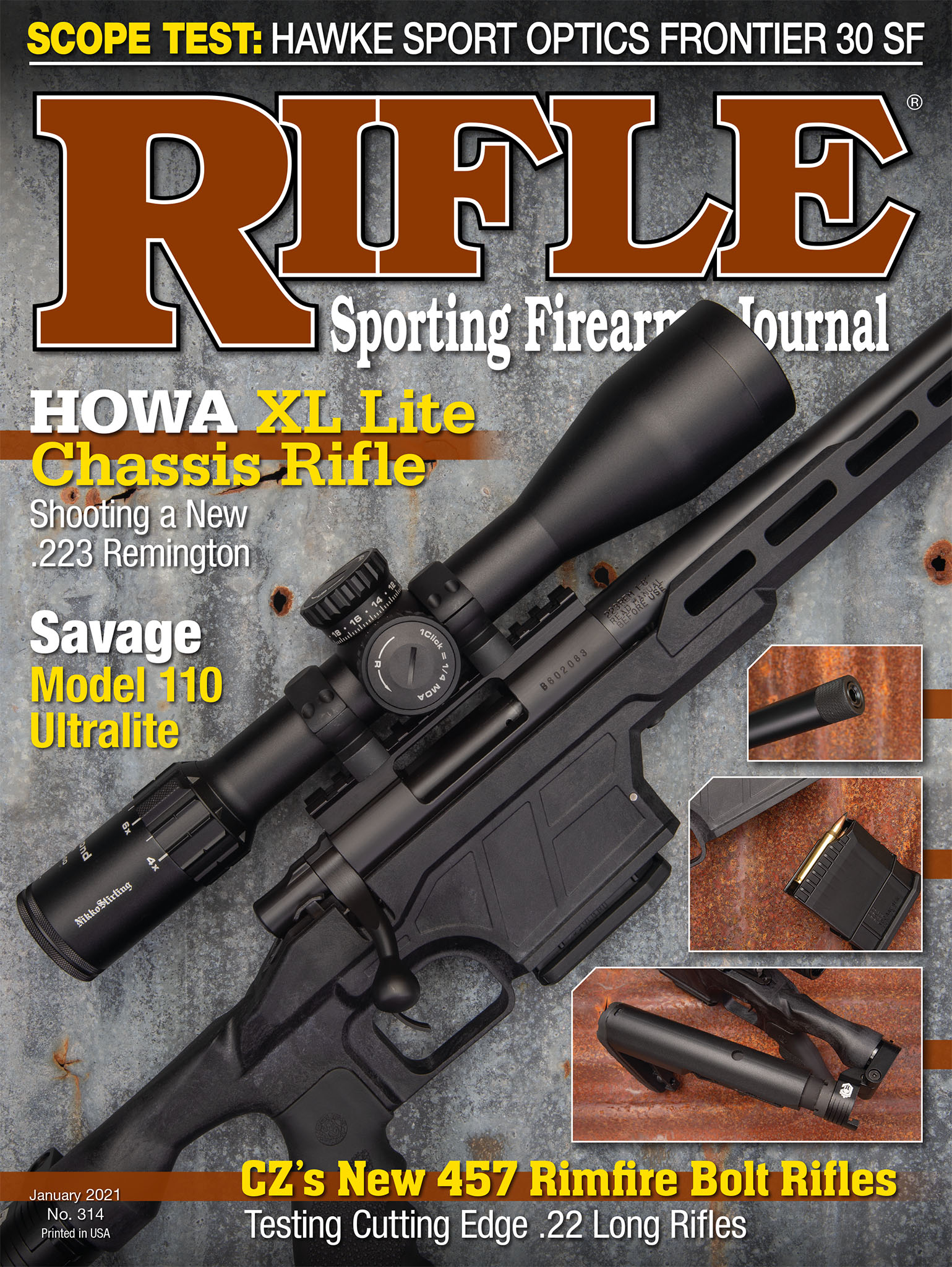Mystery Rifles
Shoot Your Way Into the Unkown
feature By: John Barsness | January, 21
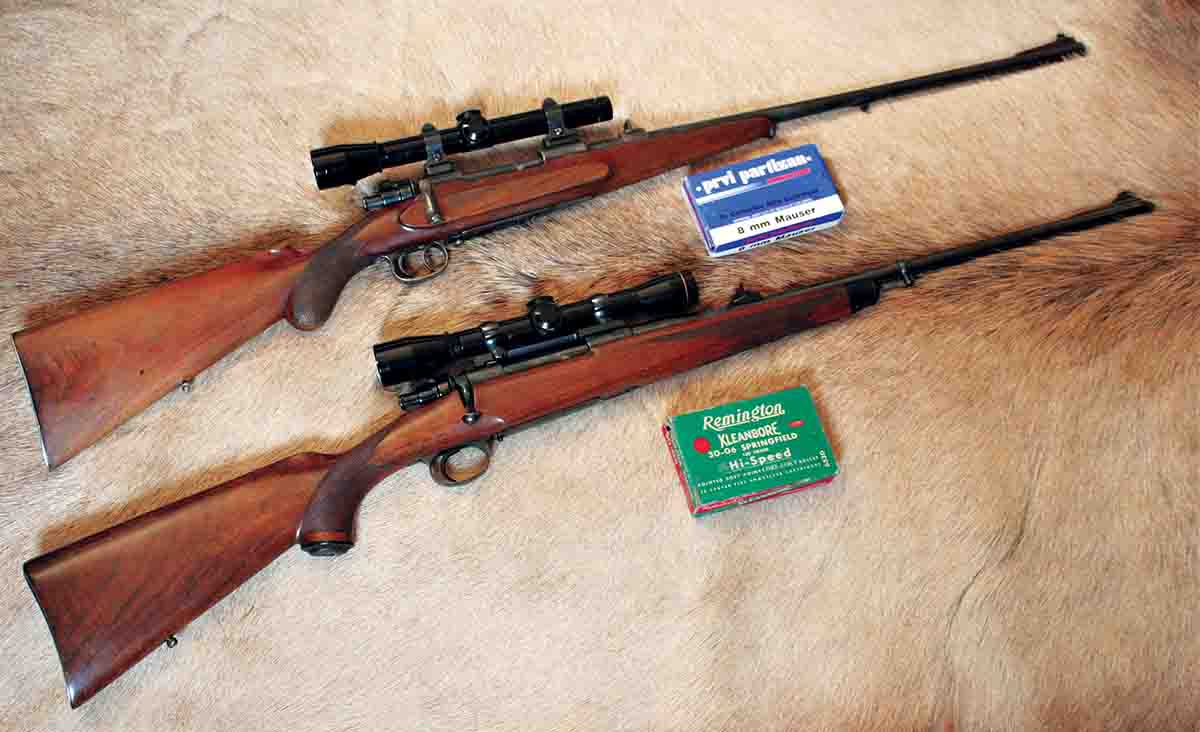
Years ago, Gary Larson, author of the comic strip The Far Side, published a panel showing two bears in the woods, standing over a rifle lying on the ground. One bear says to the other, “Thunderstick? You actually said, Thunderstick? That, my friend, is a Winchester .30-06.” Rifle loonies normally define any rifle by the same characteristics, the maker and the chambering, though not necessarily in that order. Usually the answers are obvious, such as a Winchester .30-06. Occasionally, however, they are not. The more “advanced” among us can often identify the parts used in what we term a “custom rifle,” but still have no idea who made it.
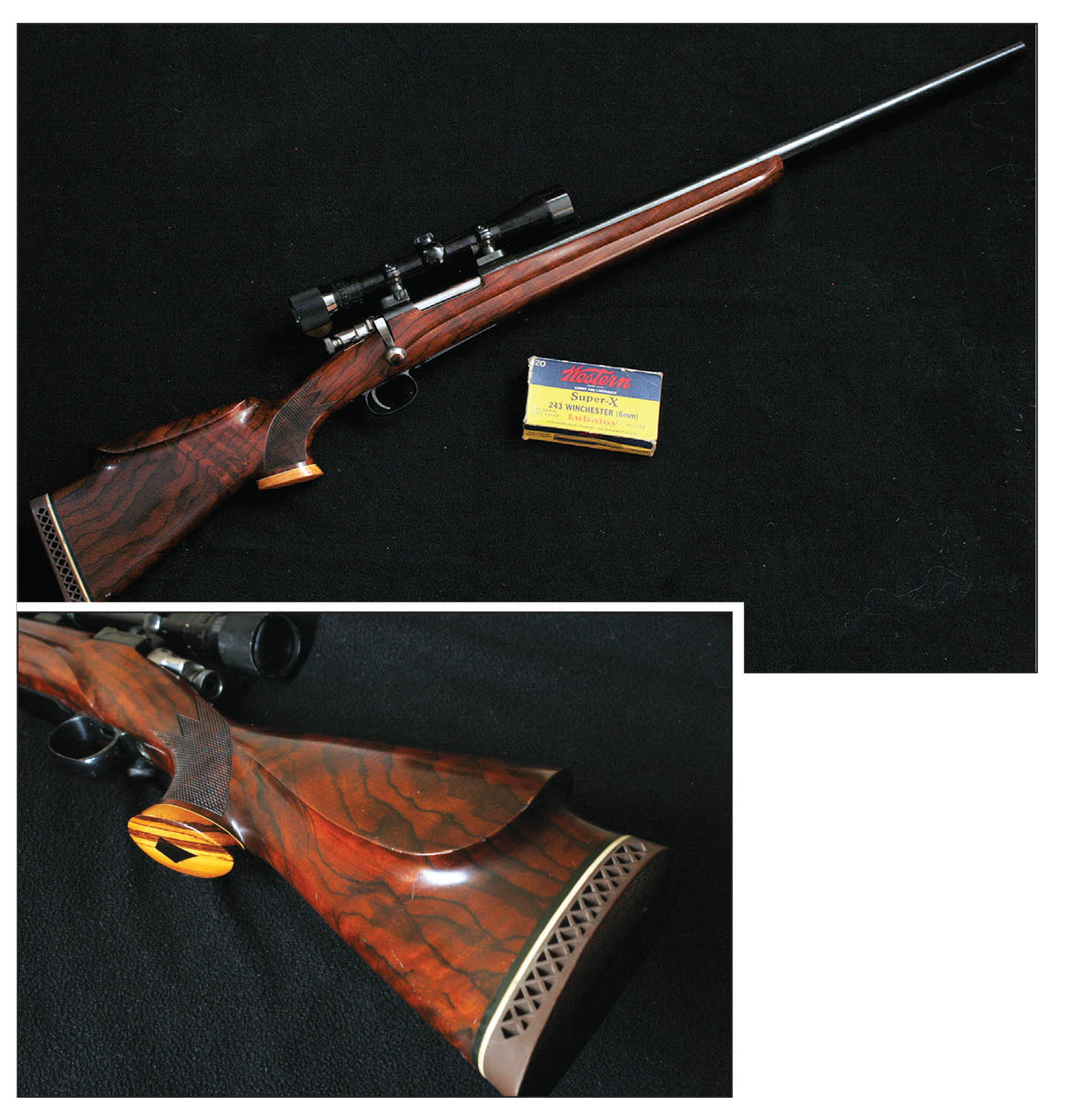
Among the first of my several “mystery rifles” appeared a decade ago on the used rack of a local store, and was glaringly identifiable in many ways, including its historic era, the 1950s and ’60s. The stock was made out of finely-figured walnut in what many called the “California style,” with a high “rollover” cheekpiece, the top cresting like a wave on Malibu Beach, and a “hooked” pistol grip separated by a white-line spacer from its zebra-wood cap with an ebony diamond inletted into the center.
In many California stocks, the forend tip was made of the same wood as the grip cap, angled at 45 degrees both at front and rear. Instead, this heavy-barreled rifle was apparently made to shoot off sandbags, with an uncheckered beavertail forend with flared sides vaguely resembling a canoe. There were no sling swivels or studs to hang up on bags during recoil, perhaps causing fliers.
While obviously very well crafted, I long ago came under the influence of Jack O’Connor, who claimed California-style stocks gave him “a case of the vapors” (according to one dictionary an archaic term for several mental conditions). The rifle’s action, a Model 1936 Mexican Mauser, intrigued me far more, since I was still occasionally turning old military Mauser actions into sporting rifles. At one time, good Mexican actions were desired for making custom sporters, since they were small-ring actions, designed around the 7x57 Mauser, and lighter than standard large-ring 98 actions, so could be made into light big-game rifles.
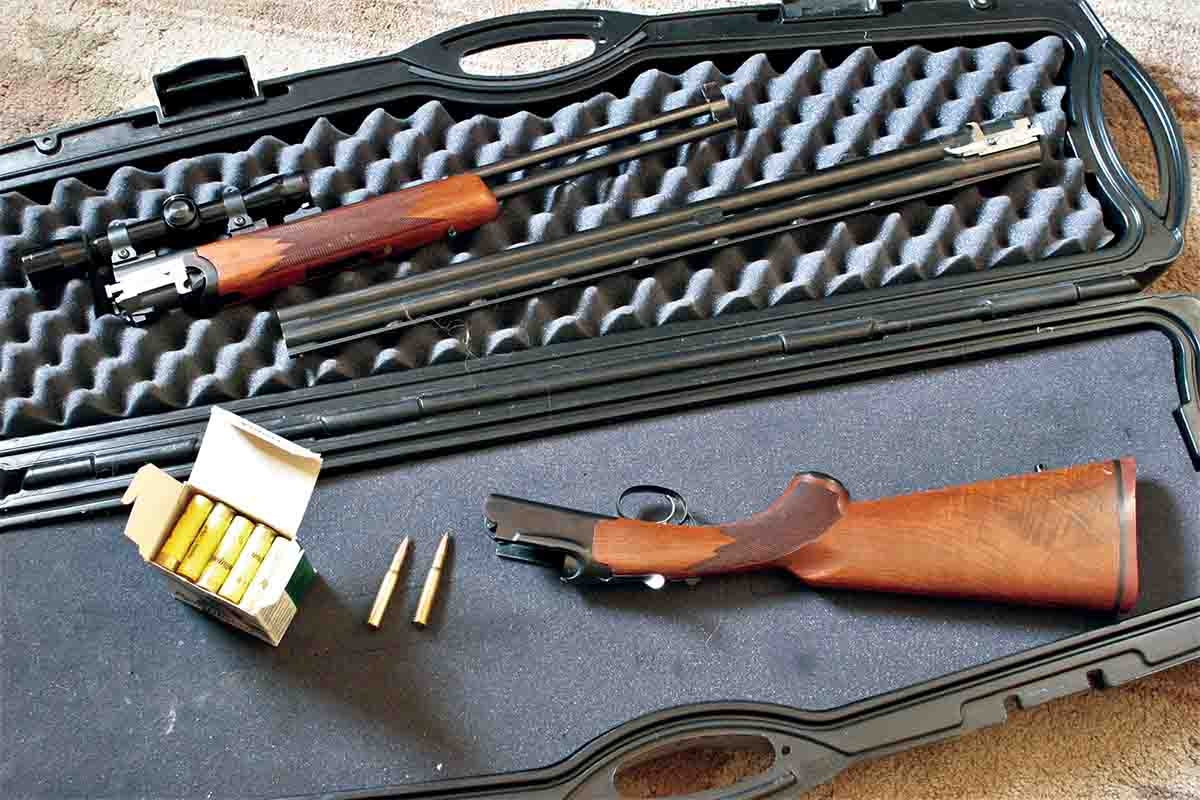
The action on the rifle was nicely “sporterized,” featuring a bolt handle with a checkered, hollow knob filled with the same walnut as the stock. The safety lever alongside the tang indicated a modern, adjustable trigger. The barrel was stamped “243,” with no decimal point or last name. I knew the action alone was worth at least $500, and the price tag read $350, so I bought the rifle with the intention of rebarreling and restocking the action.
However, I was still curious about the gunsmith, so I removed the stock to look for any indication. There was none, but a search of the “Custom Rifles” sections in my old Gun Digest annuals resulted in two rifles with stocks shaped much the same way, including the forend. They were made by Anthony Guymon, a custom gunsmith in Bremerton, Washington, from the late 1940s to early 1960s, and an internet search came up with a few more.
Many Guymon rifles were elaborately carved, or made of very contrasting laminated wood. Apparently, he did mark his rifles, including using custom-ordered Pachmayr recoil pads, and his catalogs called them “Guns of Distinction.” None of these details precisely fit my rifle, except for what Guymon called the “streamlined” forend. However, he also ran a gunsmithing school, and it may have been made by a student.
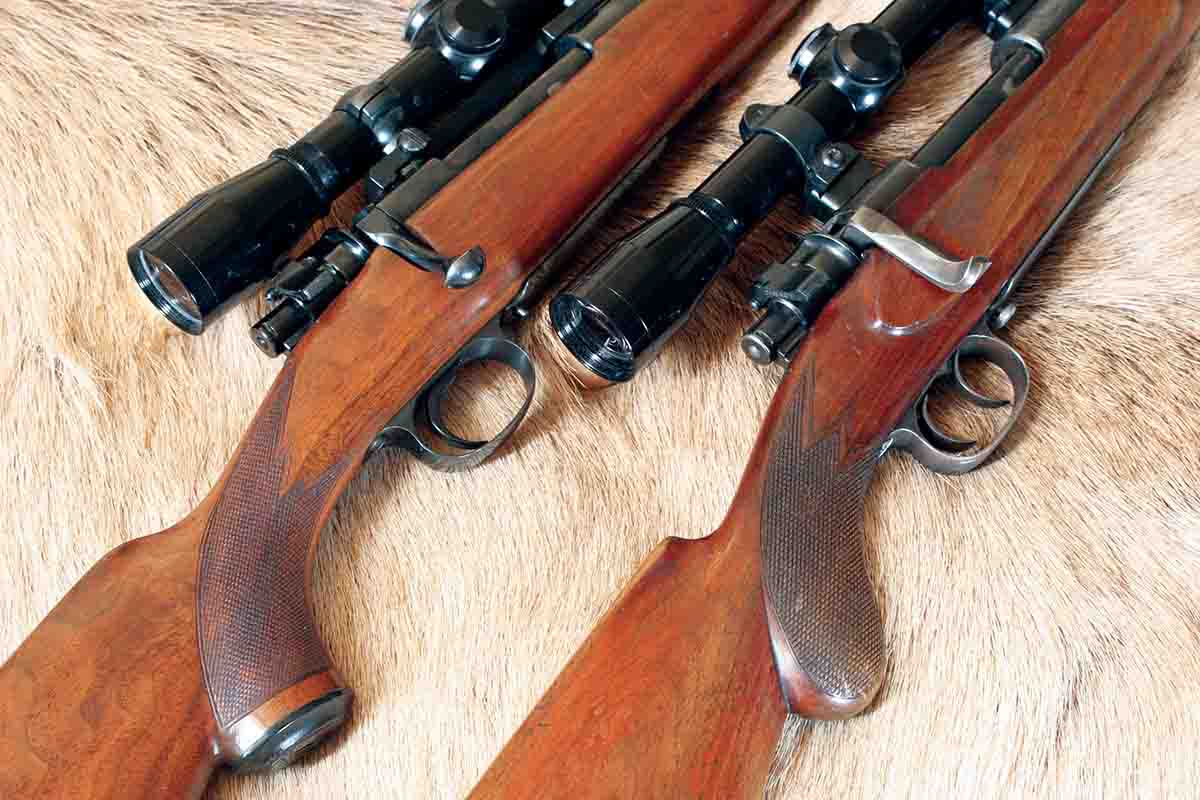
The trigger resembled a Timney, with the works between two pieces of sheet metal, but it also lacks any maker-marks. The stock was nicely epoxy-bedded, common in that era. I examined the bore with my Gradient Lens Hawkeye and found smooth cut-rifling with only a hint of throat erosion.
I next made the common mistake of “shooting the donor.” The rifle turned out to be very accurate and comfortable to shoot, partly because the stock dimensions closely resembled those of modern “tactical” stocks, including the nearly vertical angle of the hooked pistol grip. As a result, the .243 remains just as I found it – except for a 2.5-8x Bausch & Lomb scope in windage-adjustable Redfield steel rings, both “period correct,” which brought the weight to 12 pounds.
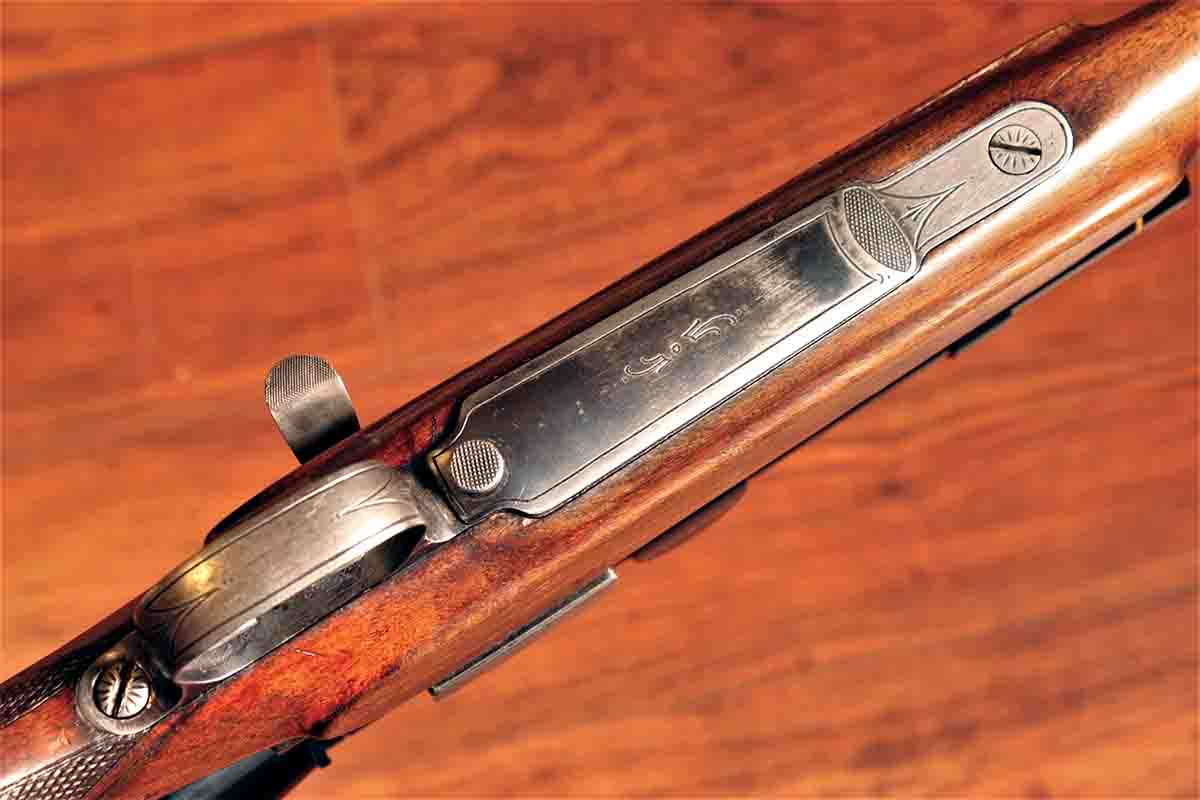
It has been on a few prairie dog shoots and occasionally is used to test .243 Winchester handloads, though its 1:10 rifling twist will not stabilize some of today’s longer, high ballistic coefficient bullets. Mostly, however, I am apparently a sucker for any well-made rifle representing a distinctive place in history, especially if the price is right.
Another mystery rifle appeared a few years later, an over/under double in .30-40 Krag, a gift from friend Tim Crawford. Actually, only the barrels are mysterious, since the “donor” in this instance was one of the original Ruger Red Label 20-gauge shotguns, and its 26-inch smoothbore barrels accompanied the gun.
Tim purchased the Ruger at a gun show and, again, there were no markings on the slim, 20.5-inch rifle barrels, not even the chambering. They are connected at the rear action block, a middle block precisely fitting the barrel channel of the forend, and a front block, which includes a bead front sight. The top barrel has a screwed-on dovetailed base for a fold down open sight in front of two scope-bedding blocks, which appeared to me like they might fit Talley steel rings, and did. The bottom barrel also includes a pinned and soldered hook for the Deeley-type latch on the forend. I have heard rumors here and there about gunsmiths who might have done the job, as has Tim, but nothing we have been able to confirm.
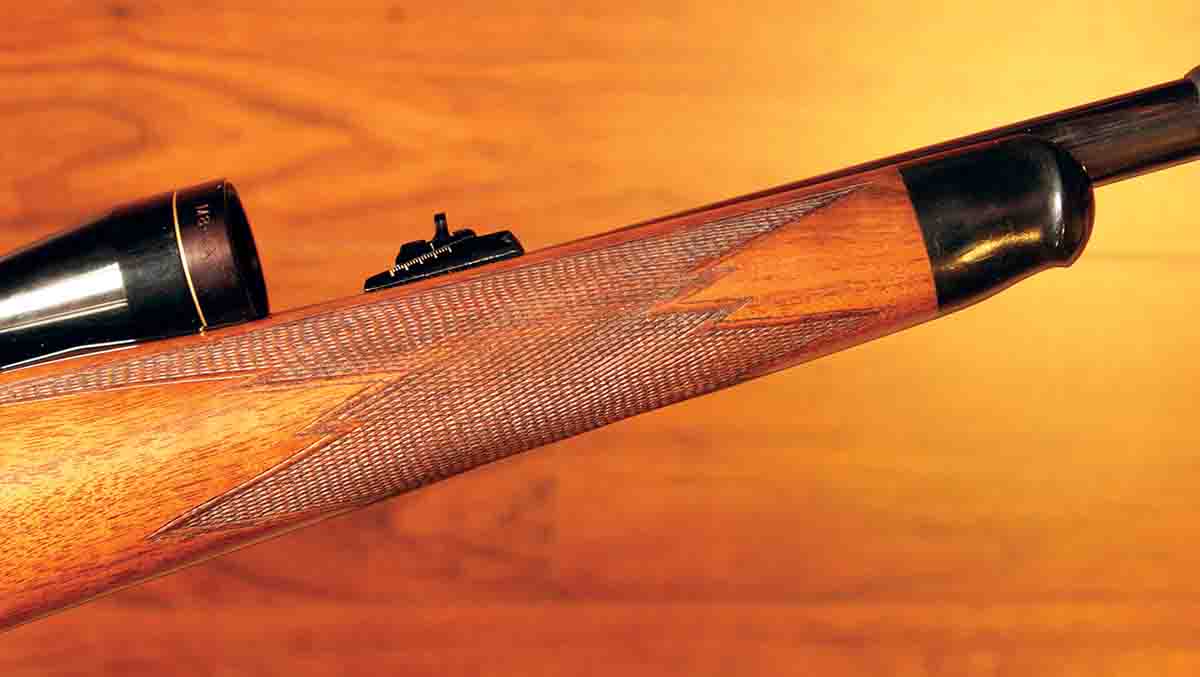
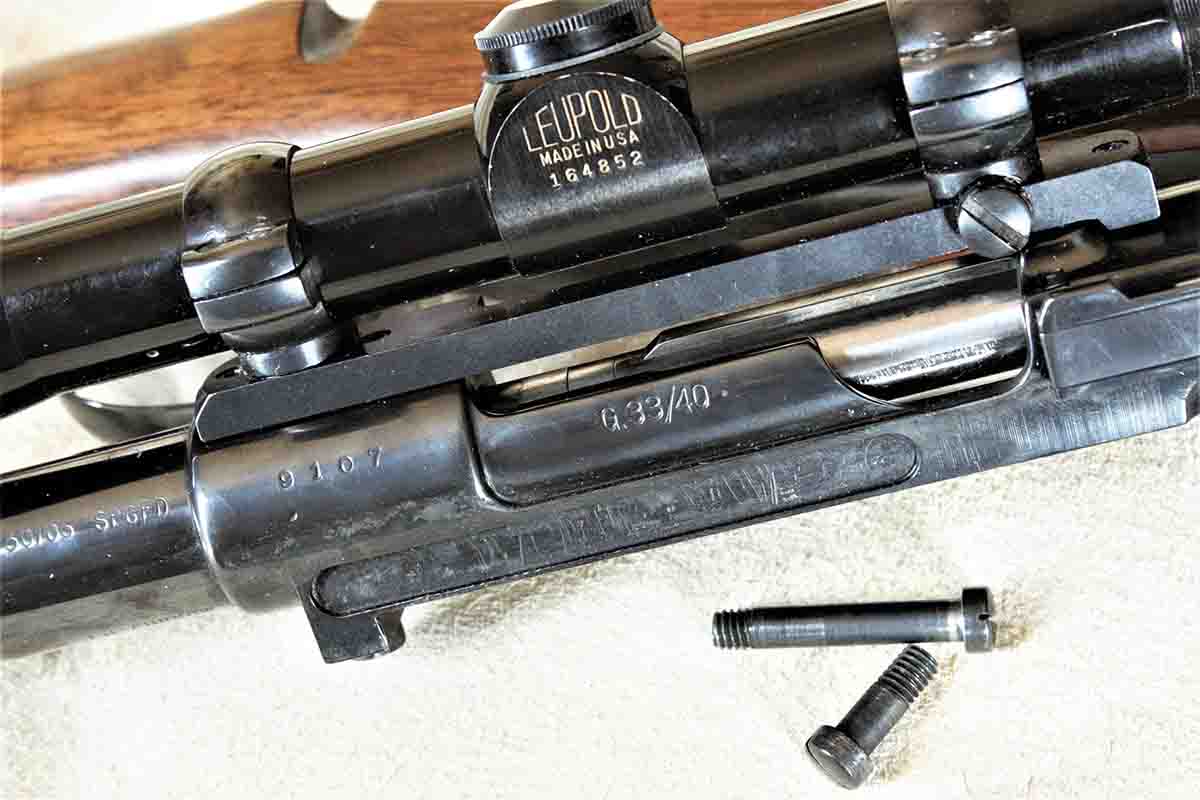
With a 4x scope mounted on the rifle barrels, the gun is exactly eight pounds, and with the shotgun barrels exactly seven, both fine weights for general hunting with a .30-40 Krag or a 20-gauge magnum. It turned out the rifle barrels regulated well with the primary handload I have used for years in various .30-40s except genuine Krags, 48.0 grains of H-4350 and a 180-grain spitzer, in this instance the Hornady InterLock Spire Point. Two “pairs,” one shot from each of the barrels, group into around 2 inches at 100 yards, pretty good for a double rifle.
In fact, the only trouble encountered with the gun occurred not with the barrels but the action. Early in 2020, I decided to check-shoot the rifle before spring black bear season. It was a cool day, and the inertia-operated single trigger often refused to reset itself between shots (one reason I prefer two triggers on double guns, whether smoothbores or rifles). The normal solution is to clean and oil the trigger mechanism, which requires taking the gun apart, then putting it back together and retesting. I did not get around to it before the weather warmed, so this winter will probably end up taking it to gunsmith Tyler Hansen at Capital Sports in Helena, Montana, who did a great job of readjusting the triggers on one of my Sauer drillings.
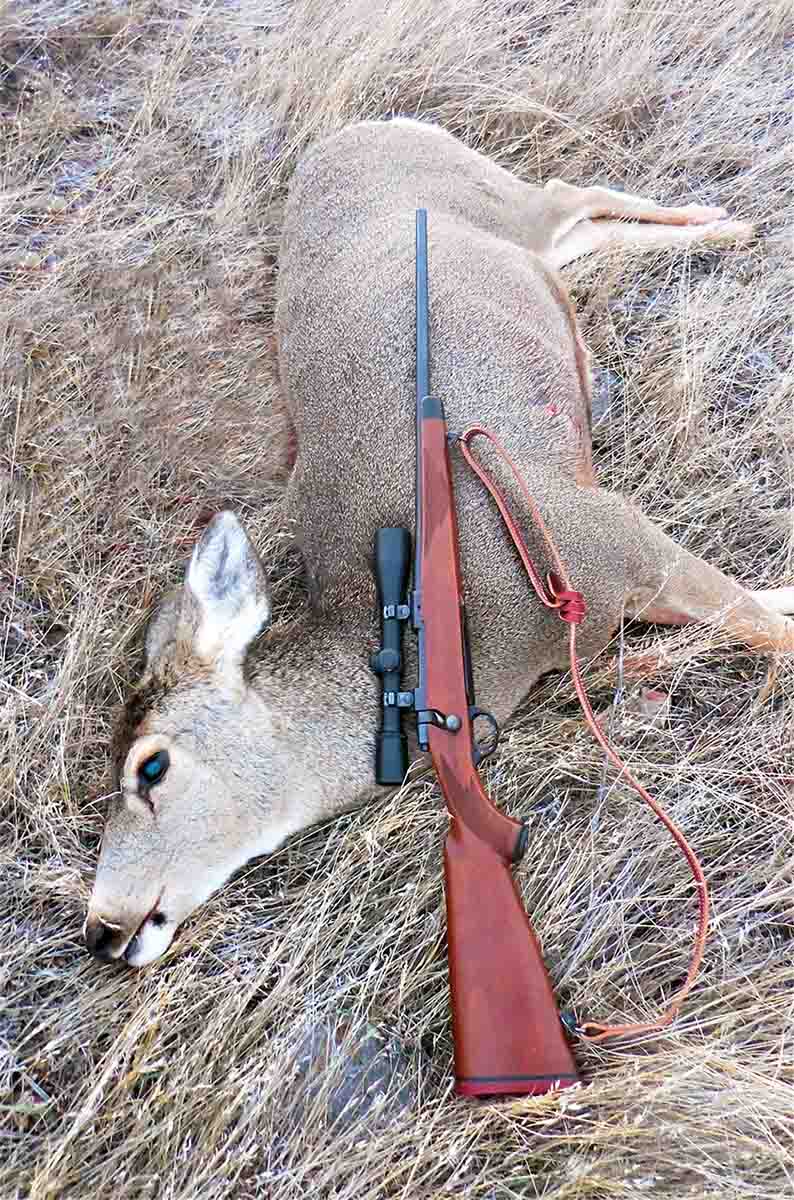
Some rifles are intentionally mysterious, one example being so-called “guild guns” made in Austria and Germany by specialists in gunmaker’s guilds, often all located in one town. One specialist made the action, another specialist barreled the action, another stocked the barreled action and yet another did the engraving, if any – but none of their names appeared on the gun.
The sample in our gun safe is Eileen’s over/under combination gun, with a 16-gauge barrel over a rifle barrel in 9x72R. Not only is it light and handy, but beautiful with nice wood and lots engraving. It also has a few German proofmarks from around a century ago – but no clue indicating who might have been on the guild “committee.”
Another German rifle with much sparser proofmarks from the same era is a sporter built on a standard K98 military Mauser with all the original markings removed (including the serial number) except for “GwF.E” on the left side of the action. This apparently stands for Gewehrfabrik (gun factory) Erfurt, which made many military 98s. One internet source claims Erfurt made a few sporters after the war to keep long-time workers employed, but I have been unable to find any reference to this in Ludwig Olson’s fine book Mauser Bolt Rifles, considered by many the ultimate reference. The barrel may be military too, with all but the first “step” lathed off, the one right in front of the chamber. However, other features were probably done later, including drilling and tapping the action for modern scope mounts.
The chamber has a very long throat, much longer than on K98 rifles, probably to accommodate the heavy, roundnose bullets popular among hunters at the time. The remodeling of the action includes a double-set trigger and an exterior button on the slide-on floorplate for easy removal. The action and floorplate are lightly engraved in an interesting geometric pattern.
The side-panel stock, made of relatively plain walnut, includes a round-bottom pistol grip with simple checkering and a short, slim Schnabel-tipped forend, without checkering. Despite the long throat, it groups some bullets weighing as light as 180 grains (and up to 250) into 1.5 inches or less (though in different places on a target) but does not particularly care for others.
Some mystery rifles are far simpler but turn out to be more than the sum of their parts, such as another modified Ruger, a tang-safety Model 77. Originally one of the Compact models with a skinny 20-inch barrel and a much slimmer stock than the standard 77, somebody rebarreled the rifle with a slim (but not skinny) 22-inch barrel, and precisely inletted the barrel channel to accommodate it.
I purchased the rifle from friend Mike Thorsen, a fishing rod designer from Washington state, who was selling it for a friend who inherited it. The friend thought the barrel might be a Douglas, but did not know for sure. The contour does not quite match any listed by Douglas, but the company also does custom contouring, so who knows? However, he was certain of the chambering, 7mm-08 Remington, even though the barrel is not marked, and the rifle shoots very well, partly because somebody – probably the same gunsmith – also adjusted/modified the factory trigger to a very crisp 2.5-pound pull, which I know from personal experience is not exactly easy on “tanger” 77s.
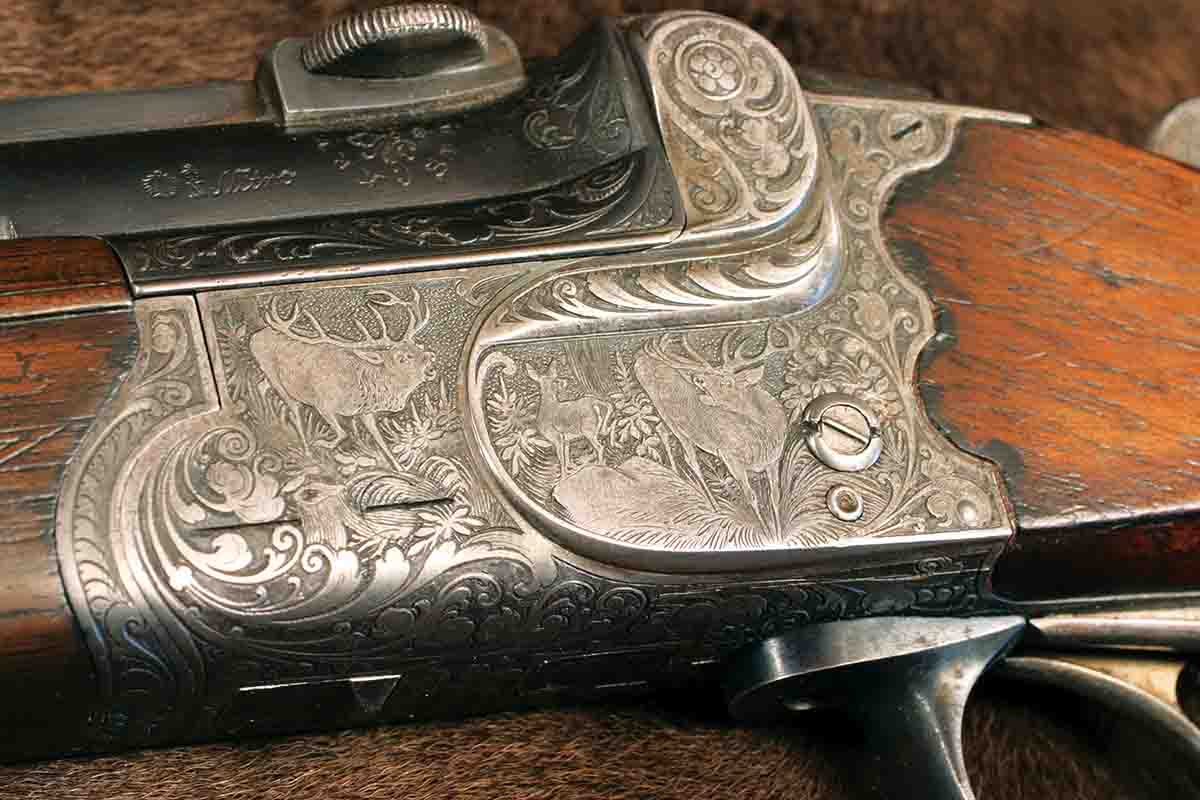
I also prefer its looks and balance to either the Compact or standard tang-safety 77s, after owning several of both. The Compacts feel too muzzle-light, and accuracy can be so-so. The walnut stocks on the standard model feel too, uh, stocky, the reason I remodeled the stock on my first 77, a .30-06, slimming it to proportions more like the Compact stock. With a 6x scope the 7mm-08 weighs 7.5 pounds, between the average weights of standard 77s and the Compacts.
My latest military Mauser-based custom rifle appeared at Capital Sports a couple years ago, and turned out to be even more mysterious than either the Mexican-actioned .243 and the old 8x57. The action is a G33/40 from one of the “mountain carbine” Mausers built during World War II. Like the Mexican actions, G33/40s were prized for their light weight, accomplished with various lightening cuts and a “small” receiver ring, though the overall length and action-screw spacing is the same as the standard K98. The “bottom metal” is a gracefully-modified K98 assembly, like the 8x57’s with an exterior floorplate button. The barrel is nicely stamped “30-06 SPGFD,” a contraction of Springfield I cannot recall seeing before.
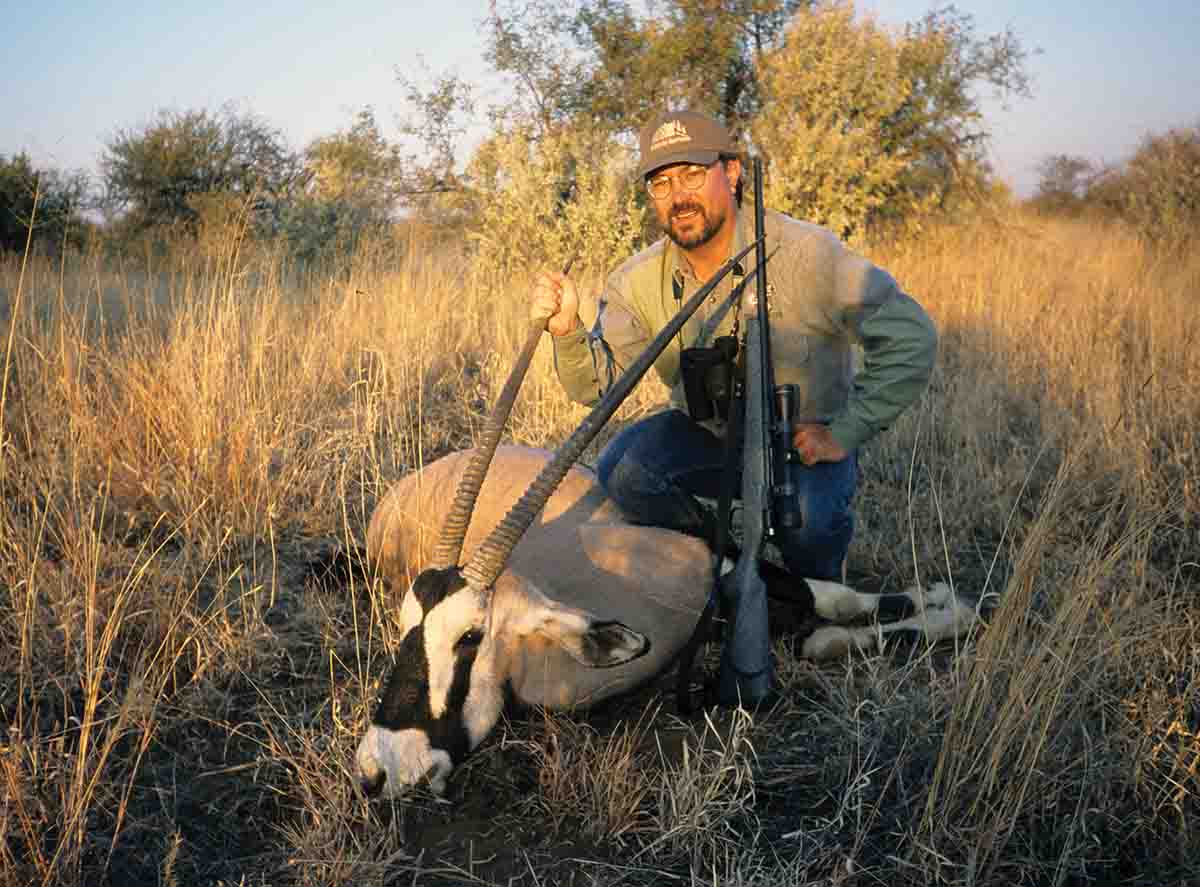
At first glance, the rifle looked like a classic American-style rifle with a stock made of nicely-figured walnut and extensive, near-perfect point-pattern checkering, which wraps all the way around the forend. However, a few smaller features indicate some German influence.
The rifle did not come from Germany, since it lacks German proof-marks, but the ebony forend tip is a subtle Schnabel, and the bolt handle has what might be termed a semi-butterknife knob. Like the Mexican .243, there is no clue who made it, whether on the barreled action, inside the stock or under the checkered steel buttplate.
The trigger is an adjustable Jaeger, made from the 1950s to the 1970s by noted custom gunsmith Paul Jaeger of Jenkintown, Pennsylvania. Some people have suggested the rifle might be a Jaeger, but he was well-known for “signing” his work. I have also seen quite a few Paul Jaeger rifles, and again looked extensively through the Gun Digest annuals and on the internet, and none look like this one.
The only scope base I had that fit the small-ring action was a one-piece Leupold. I mounted an old 4x28 Leupold M8, and even with the 7-ounce base the rifle is as light as the 8x57. It has shot very well with three kinds of factory ammunition and one of my favorite .30-06 handloads, with three-shot groups averaging about 0.8 inch.
After so many encounters with well-made mystery rifles, I started wondering why talented gunsmiths allow a rifle to leave their shop without some indication of who did the work, if only for advertising. However, eventually it dawned on me that some of my own custom rifles may eventually mystify some other shooter.
One example is my .338 Winchester Magnum put together by various people in the 1990s, when it served as my primary travel rifle. The action is a commercial FN Mauser, originally for .30-06-based rounds. Missoula, Montana, gunsmith Doug Wells fit a take-off Sako barrel and opened the bolt face. I then “adjusted” the feed rails, fitted a military Mauser trigger converted to a single-pull of 3 pounds, and bedded the barreled action in a Bansner High-Tech synthetic stock, spray painting it olive green. Oh, and I stamped the barrel “338,” with no decimal point. A few years later the late Dave Gentry installed one of his three-position safeties, and also insisted on refinishing the stock with his latest method, pickup bed-liner paint, in a gray granite finish. In other words, the .338 is a sort of guild gun, with no clue about who put it together.


